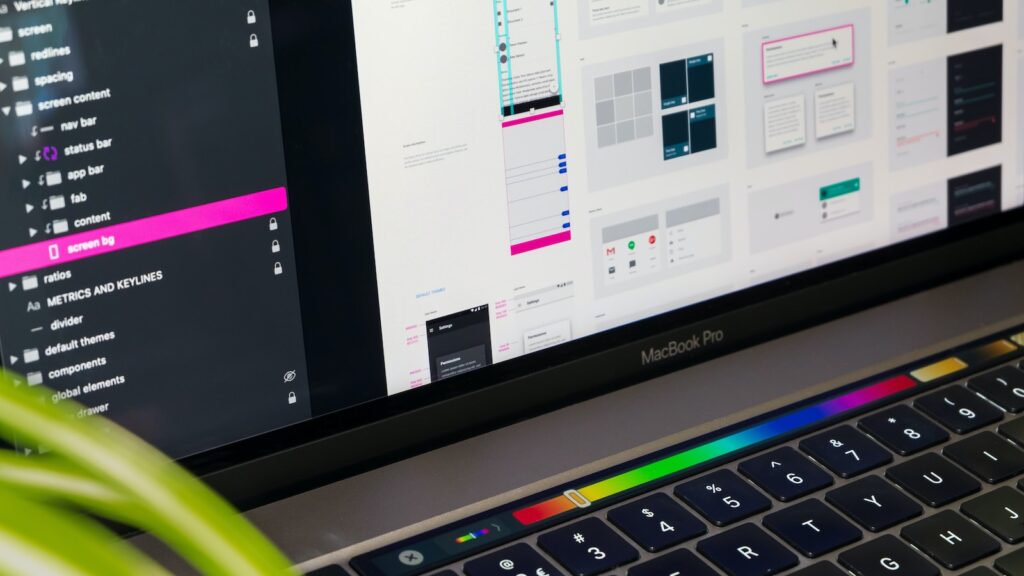Mobile is the way to go when it comes to digital technology nowadays. The market for mobile applications is at a peak and is expected to keep growing. If you’re an app developer, you’d want your app to be available on both phone and tablet platforms for increased visibility and accessibility. But the question is, is there really a difference when it comes to developing mobile applications for phone and tablet devices? In this article, we’ll take a comprehensive look at the differences, challenges, opportunities, and best practices for developing phone and tablet applications.
Understanding the Basic Differences between Phone Apps and Tablet Apps
The essential difference between phone apps and tablet apps is their physical size. The screen size of phones is typically smaller, ranging from 4 to 6 inches, while tablets have bigger screens of around 7 to 10 inches. As a developer, you must consider how the app will look, feel, and work on each device. A phone app needs to be optimized for one-handed use, while a tablet app needs to be more touch optimized and for use with both hands.
Another important difference between phone apps and tablet apps is the user’s behavior and context of use. Phone apps are often used on-the-go, while tablet apps are more commonly used in a stationary setting. This means that phone apps should be designed for quick and easy access to information, while tablet apps can have more complex features and longer user sessions. Additionally, tablet apps may have more screen real estate to display information and graphics, allowing for a more immersive user experience.
Design Considerations for Developing Phone Apps vs. Tablet Apps
Designing mobile applications is a crucial aspect of the process. The smaller screen size on phones makes it necessary for developers to present content in a concise and easily readable manner. On the other hand, tablet applications can utilize their larger screens for better optimization of layouts and designs. Developers should also take into account the devices’ screen resolutions, which can affect the quality of image and text graphics on different devices.
Another important consideration when designing mobile applications is the user experience. Phone apps are often used on-the-go, which means that users may be distracted or multitasking while using the app. Therefore, developers should prioritize simplicity and ease of use in phone app designs. Tablet apps, on the other hand, are often used in more relaxed settings, such as at home or in a coffee shop. This allows for more complex and immersive designs that can take advantage of the larger screen size and more focused user attention.
Development Challenges and Opportunities for Phone App Makers
Developing phone apps can be challenging due to the limited amount of screen space available. However, this constraint can also lead to opportunities for innovation and creative design solutions. The smaller screen can force developers to prioritize content and features, leading to more targeted, user-oriented apps.
Another challenge for phone app makers is the need to constantly adapt to new technologies and operating systems. With frequent updates and changes to mobile devices, developers must stay up-to-date and ensure their apps are compatible with the latest software. This can require significant resources and time, but it also presents opportunities for developers to stay ahead of the curve and offer cutting-edge features.
Furthermore, phone app makers must also consider the issue of security. With the increasing amount of personal information stored on mobile devices, it is crucial for developers to prioritize security measures and protect user data. This can be a complex and ongoing process, but it is essential for building trust with users and maintaining a positive reputation in the industry.
Understanding the Market Dynamics of Phone and Tablet Apps
The phone and tablet markets are different, and understanding these variations can help developers target their audience better. For instance, phones are typically used for on-the-go access to information, while tablets are preferred for entertainment and productivity tasks, such as reading and working on documents or presentations.
Another important factor to consider is the operating system of the device. Apple’s iOS dominates the tablet market, while Android is more popular on phones. This means that developers need to tailor their apps to the specific operating system to ensure optimal performance and user experience. Additionally, the app market is highly competitive, with millions of apps available for download. To stand out, developers need to focus on creating unique and innovative apps that offer value to users.
Key Technical Considerations for Developing Phone and Tablet Apps
When developing phone and tablet apps, developers must consider factors like the various operating systems that these devices use, the technology involved in storage and connectivity, and the specific user requirements of each application. Additionally, developers should be knowledgeable about the types of devices and platforms where the app will be used, ensuring the app’s compatibility. It is important to note that customization for each device can improve the overall user experience.
Another important technical consideration for developing phone and tablet apps is the security of the app. Developers must ensure that the app is secure and protected from potential threats like hacking and data breaches. This can be achieved through the use of encryption, secure authentication methods, and regular security updates.
Furthermore, developers should also consider the performance of the app. The app should be optimized for speed and efficiency, with minimal loading times and smooth transitions between screens. This can be achieved through techniques like caching, minimizing network requests, and optimizing images and other media used in the app.
User Experience (UX) Design Differences between Phone and Tablet Apps
User experience is a crucial aspect of any mobile application. The experience on a phone app should be smooth and fast, with minimal navigation for maximum efficiency. But on a tablet app, the experience should be more immersive, catering to the larger screen and multi-tasking capabilities of the device.
One of the key differences in UX design between phone and tablet apps is the use of gestures. While phone apps rely heavily on swiping and tapping, tablet apps can incorporate more complex gestures such as pinch-to-zoom and two-finger scrolling. These gestures can enhance the user experience by allowing for more intuitive and natural interactions with the app.
The Role of Screen Size and Resolution in Developing Mobile Apps
Screen size and resolution are important technical factors to consider when developing mobile applications. They determine the quality of the appearance of graphics, images, and text and can have a significant effect on the overall user experience. Developers must optimize the app for different screen sizes and resolutions, ensuring that the app runs smoothly on each device.
One important consideration when developing for different screen sizes and resolutions is the aspect ratio. The aspect ratio is the proportional relationship between the width and height of the screen. Developers must ensure that the app’s layout and design are optimized for each aspect ratio to avoid distortion or cropping of images and text.
Another factor to consider is the pixel density of the screen. Pixel density refers to the number of pixels per inch (PPI) on a screen. Higher pixel density screens can display more detail and sharper images, but they also require higher resolution graphics. Developers must balance the need for high-quality graphics with the app’s performance and download size.
UI Design Principles for Effective Mobile App Development
Developers should focus on creating user interfaces that are simple, intuitive, and user-friendly. Phone applications should have a minimal interface to minimize the amount of navigation required for functionality. Conversely, tablet applications can offer more visual and interactive UI elements to fully utilize the device’s larger screen.
Another important aspect of UI design for mobile apps is to ensure that the app is accessible to all users, including those with disabilities. This can be achieved by incorporating features such as voice commands, larger font sizes, and high contrast color schemes. Additionally, developers should consider the cultural and linguistic diversity of their user base and provide options for language localization and customization of the app’s interface.
Best Practices for Developing Cross-Platform Mobile Applications
Developing cross-platform mobile applications can be challenging. Developers need to ensure that the app runs seamlessly on various devices and platforms, ensuring compatibility and consistency across all platforms. The use of responsive web design can be advantageous when developing cross-platform applications.
Another important consideration when developing cross-platform mobile applications is to prioritize user experience. The app should be intuitive and easy to use, with a consistent design and layout across all platforms. It’s also important to optimize the app’s performance, ensuring fast load times and smooth navigation. Regular testing and updates are crucial to ensure that the app continues to function properly on all platforms and devices.
The Future of Mobile App Development: Trends and Opportunities
The mobile app development industry is dynamic, and developers should stay abreast of the latest trends and opportunities. Trends like progressive web apps, artificial intelligence, and machine learning are shaping the future of mobile app development. Developers can take advantage of these trends to improve the quality and functionality of their mobile applications.
Another trend that is gaining momentum in mobile app development is the use of augmented reality (AR) and virtual reality (VR) technologies. AR and VR have the potential to revolutionize the way users interact with mobile applications, providing immersive experiences that were previously impossible. Developers can leverage AR and VR to create engaging and interactive mobile apps that offer unique experiences to users.
Monetizing Your Mobile App: Strategies to Boost Revenue and Profitability
Monetizing mobile applications can be challenging, but a crucial aspect of app development. Developers can use various strategies like in-app purchases, subscriptions, and advertising to boost revenue and profitability. It is essential to strike a balance between monetization and user experience to avoid deterring users with excessive advertising.
Another effective strategy for monetizing mobile apps is to offer a freemium model. This model allows users to download and use the app for free, but offers additional features or content for a fee. This approach can be particularly effective for apps that offer a unique or valuable service, as users may be willing to pay for premium features. However, it is important to ensure that the free version of the app still provides enough value to attract and retain users.
Tips for Successful Launching of Your Mobile App on Google Play Store and Apple App Store
The launch of a mobile application can be a make-or-break moment for developers. App developers should optimize their app store listings to ensure visibility, improve user engagement, and increase downloads. Additionally, user reviews and ratings can be instrumental in driving success and improving app reputation.
In conclusion, developing phone apps and tablet apps is not the same. Developers must consider various technical, design, and user experience factors when designing and developing mobile applications for these two types of devices. By following best practices and understanding the market dynamics, developers can create high-quality mobile applications that meet the diverse needs of end-users and capitalize on the growth of the mobile app market.





